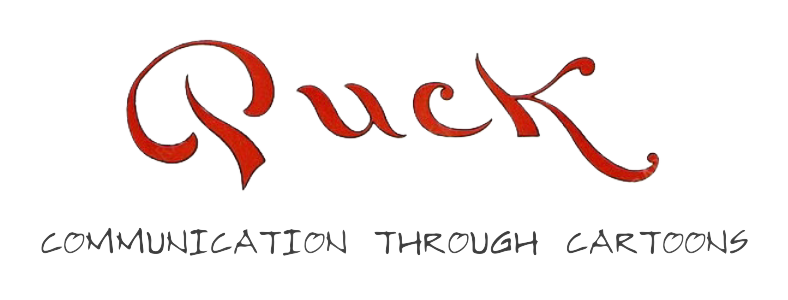


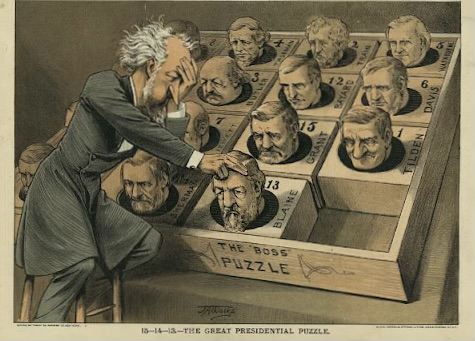
15--14--13. The Great Presidential Puzzle (March 17, 1880): Senator Roscoe Conkling looks at possible Republican Presidential Candidates [Source: Puck]
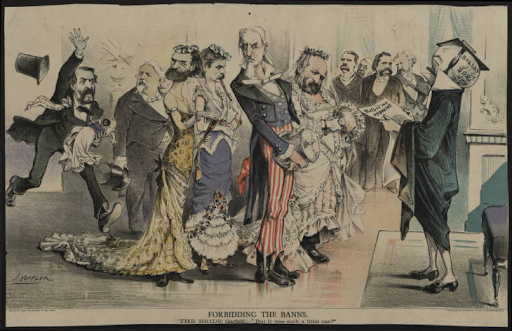
Forbidding the Banns (August 25, 1880): James Garfield as a bride marrying Uncle Sam [Source: Puck]
During the 1880 presidential election between Representative James Garfield and General Winfield Scott Hancock, Puck cartoonists ridiculed the nominees instead of their policies or parties. In early election cartoons like one drawn by James Albert Wales, Garfield was not included, as no one anticipated his nomination. One of the most famous cartoons from this election was “Forbidding the Banns,” by Joseph Keppler. In the cartoon, Keppler mocks Garfield’s involvement in the Credit Mobilier scandal and his lack of accountability. Keppler communicates his dissent by illustrating a familiar picture of 19th century weddings while attacking Garfield’s infidelities. This cartoon called for political inclusivity as Keppler drew a very familiar picture, one that people of all educational, economic, and social backgrounds could understand. The cartoon engaged constituents the presidential candidates’ speeches would never reach. The cartoon communicated many messages but most importantly, the messages were communicated to a large audience.

Political rumors suggest that Puck's pro-Cleveland cartoons contributed to Governor Grover Cleveland’s victory as the first Democratic presidential nominee since 1856. The presidential election of 1884 was between Cleveland, a man with an impeccable political history and Republican James Blaine, a man with a scandalous political history. In the cartoon, “His Own Destroyer,” Friedrich Graetz depicts Blaine overcome by the weights of failed politics from his past. The "Cleveland the Celibate" cartoon by Bernhard Gillam depicted Cleveland as an honest man focused on his work, resisting all temptations: women, money, social gatherings, and etc. During the election, Puck cartoons strategically criticized Blaine and glorified Cleveland clearly communicating its preference and influencing readers’ opinions about the candidates.
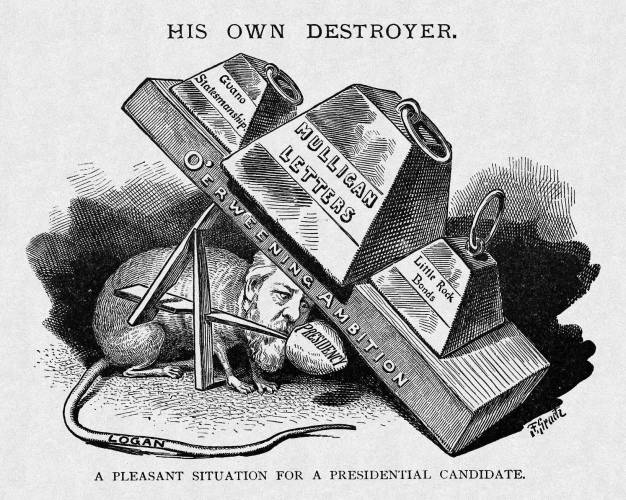
His Own Destroyer (September 24, 1884): James Blaine is overcome by his failed politics [Source: Puck]
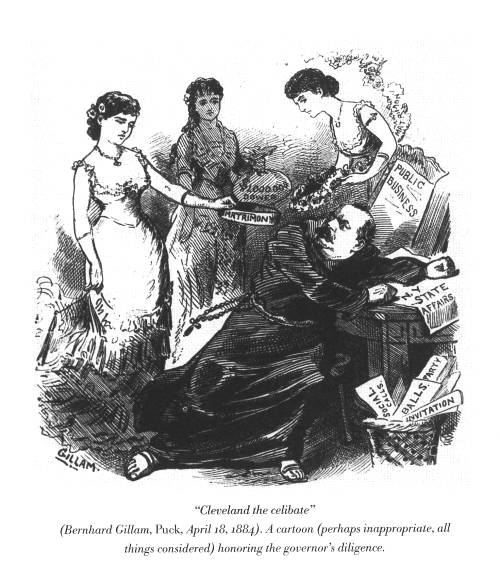
Cleveland The Celibate (April 18, 1884): Grover Cleveland is resisting temptations and focusing on his work [Source: Puck]

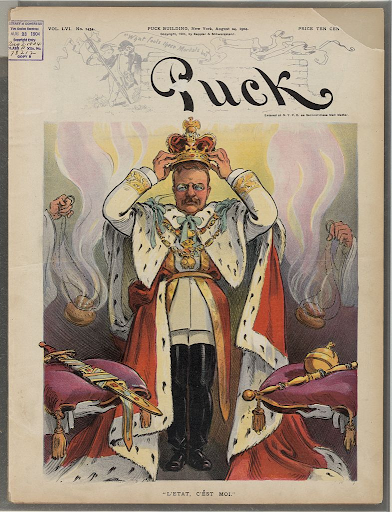
L'etat, C'est Moi (August 24, 1904): Theodore Roosevelt is dressed up like Louis XIV [Source: Puck]
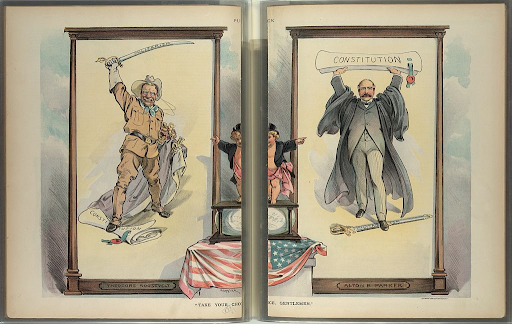
Take Your Choice, Gentlemen (October 12, 1904): Theodore Roosevelt steps on the Constitution, upholding the sword of Militarism & Judge Alton B Parker steps on the sword of Militarism, upholding the Constitution. [Source: Puck ]
During the presidential election of 1904 between President Theodore Roosevelt and Judge Alton Parker, Puck cartoons focused on portraying Roosevelt as an authoritarian leader. “"L'etat, C'est Moi,” a cartoon by Udo Keppler, shows Roosevelt dressed up as Louis XIV paralleling the two leaders’ despotic leadership. Roosevelt was often criticized for overstepping his power as an executive leader.
Another cartoon by Udo Keppler titled “Take Your Choice, Gentlemen” was published right before the election and it shows President Roosevelt stepping on the Constitution and Judge Parker upholding the Constitution. Until the election day, most Puck magazine cartoons focused on campaigning for the Democratic candidate, Judge Parker. Puck cartoons communicated a clear preference and projected this opinion on readers, influencing the readers’ votes.

In 1908, incumbent President Theodore Roosevelt promised not to seek a third term in the upcoming election. Instead, he persuaded William Taft, Secretary of War and Roosevelt’s close friend, to run. This prompted the creation of many cartoons illustrating Roosevelt’s role in the election. The Puck cartoon “Goal!” portrays President Roosevelt as a basketball player shooting a ball, a reference to Taft, into a basket labeled “nomination.” This cartoon demonstrated how Roosevelt was the driving force behind Taft’s campaign, nomination, and victory in the election of 1908.
The Puck cartoon “The Republican Hare and the Democratic Tortoise” compared Democratic William Jennings Bryan to Republican William Taft. The cartoon was based on Aesop’s fable of the tortoise and the hare. It communicated that although Taft (the hare) had the clear advantage, if he rested or stopped his campaign, then Bryan (the tortoise) would win the race. However, Taft maintained an active campaign and secured a win in the 1908 election.
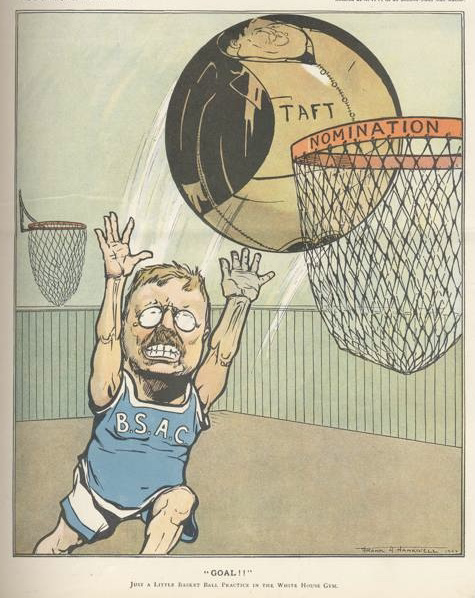
Goal! (March 4, 1908) [Source: Frank Nankivell, Puck]
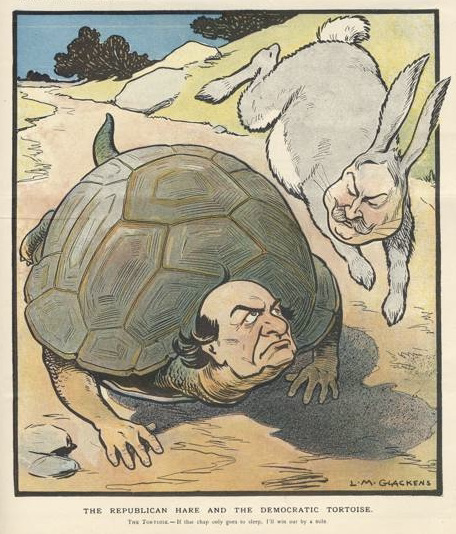
“The Republican Hare and the Democratic Tortoise” (July 8, 1908) [Source: Louis M. Glackens, Puck]